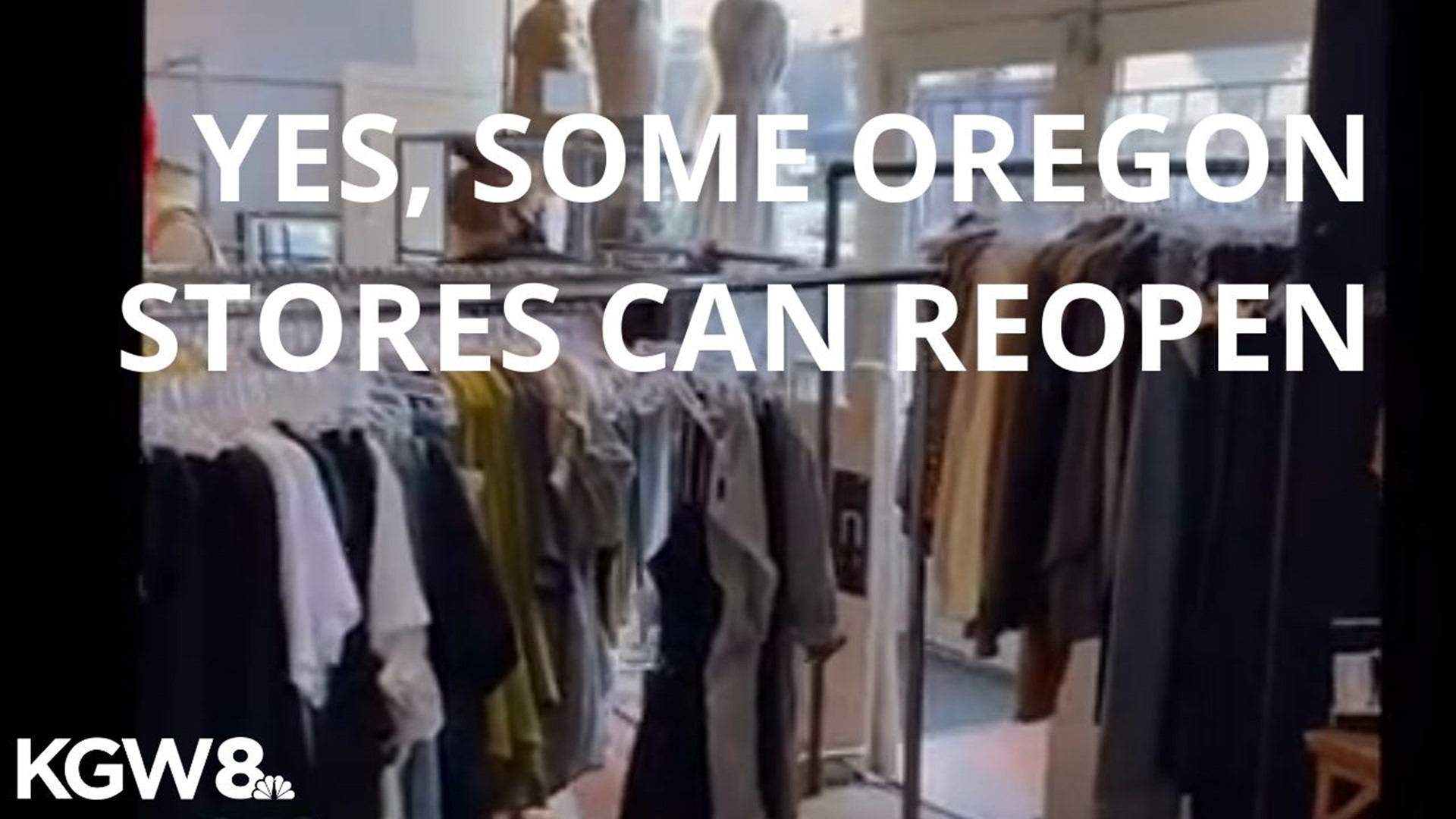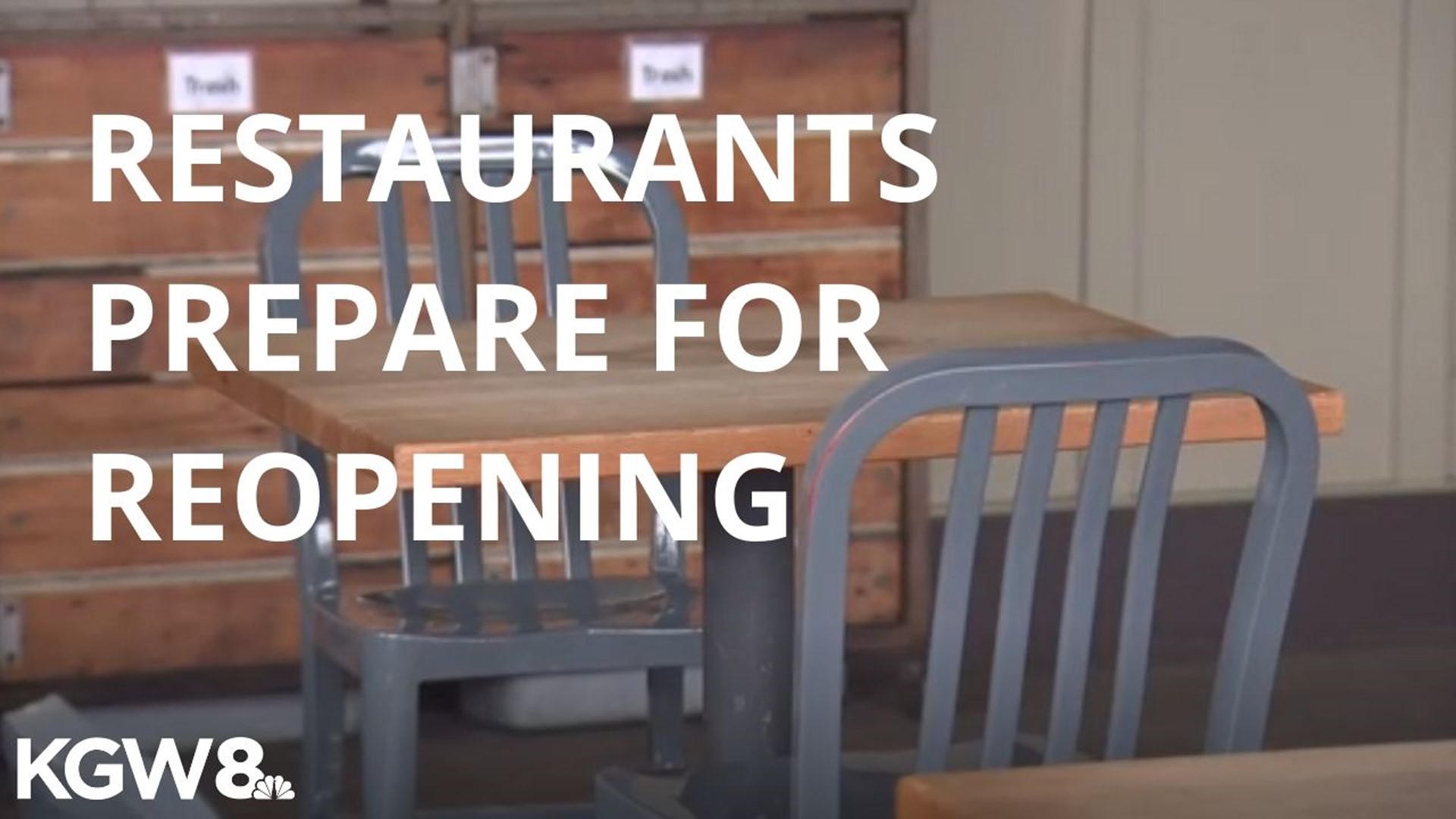PORTLAND, Ore. — Many retail stores across Oregon can reopen Friday for the first time in nearly two months as the state continues easing restrictions put into place to curb the spread of the coronavirus.
Some retailers, such as jewelry stores and boutique shops, have been shut down since Gov. Kate Brown issued her executive stay-home order on March 23.
But starting Friday, regardless of if they’re located in a county that has entered Phase 1 of reopening, those closed stores can welcome shoppers again as long as they aren’t in a mall and they follow state COVID-19 health guidelines.
Those new safety guidelines will make your shopping experience different the next time you head to your favorite store. The new guidelines include stores limiting customers, maintaining six feet of distance between people and posting signs encouraging social distancing.
Here is a full breakdown of the rules put together by Gov. Brown’s office.
Retail stores are required to:
- Limit the number of customers in the retail store and focus on maintaining at least six feet of distance between people and employees in the store. Store management should determine maximum occupancy to maintain at least six feet of physical distancing, considering areas of the store prone to crowding (like aisles) and limit admittance accordingly.
- Post clear signs listing COVID-19 symptoms, asking employees and customers with symptoms to stay home, and listing who to contact if they need assistance.
- Use signs to encourage physical distancing.
- Frequently clean and sanitize work areas, high-traffic areas, and commonly touched surfaces in both customer/public and employee areas of store. Wipe down changing room doorknobs, walls and seating between each customer use.
- Require all employees to wear cloth, paper or disposable face coverings. Businesses must provide cloth, paper or disposable face coverings for employees.
To the extent possible, retail stores should, but are not required to:
- Strongly encourage all customers to wear cloth, paper or disposable face coverings. If a store sets a policy that all customers are required to wear cloth, paper or disposable face coverings, store management should consult with their legal counsel to determine whether such a requirement can be enforced.
- Consider placing clear plastic or glass barriers in front of cashiers or customer service counters, or in other places where maintaining six feet of physical distance between employees and customers is more difficult.
- Encourage one-way flow with marked entrances and exits, but do not block egress for fire exits. Use signs to direct one-way flow of traffic.
- Use signs and tape on the floor to maintain physical distancing while waiting for cashiers.
- Prohibit customers from trying on items that are worn on the face (cloth masks, scarves, headbands, eyewear).
- Decide whether to reopen fitting rooms. If fitting rooms are reopened, customers should wash hands or use hand sanitizer before and after trying on clothes. Retailers should provide hand sanitizer or hand washing stations near fitting rooms. Note: There are no scientific data to indicate that clothing items are a major means of spread of the coronavirus. Any risk from this exposure is likely to be very low. Items that have been in a fitting room can be set aside for a day or longer if the retailer is concerned about perceived risks from clothing that has been tried on by customers.
- When processing returns, employees should wash hands or use hand sanitizer before and after handling items. Retailer may set items aside for a day or longer if concerned about perceived risks of exposure.
- Consider offering alternative order ahead and pick up options, such as curbside pickup as appropriate and applicable.
- Review and implement General Guidance for Employers, as applicable.
As for retailers in outdoor and indoor shopping centers, such as malls, if they don't provide essential services, they have to wait for their counties to qualify for Phase 1 of reopening. Thirty-one counties entered Phase 1 on Friday. Here are the safety guidelines shopping centers and malls must follow in those counties.


